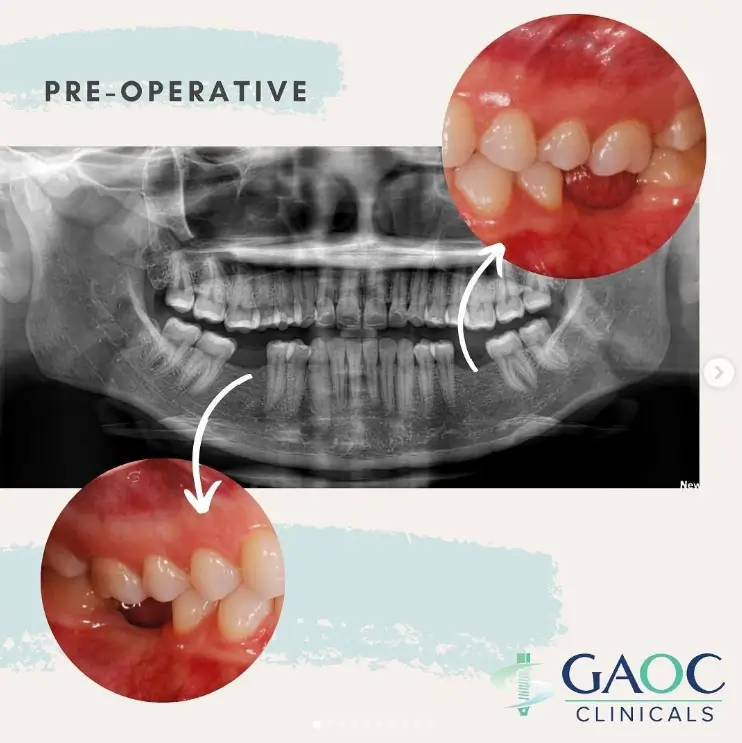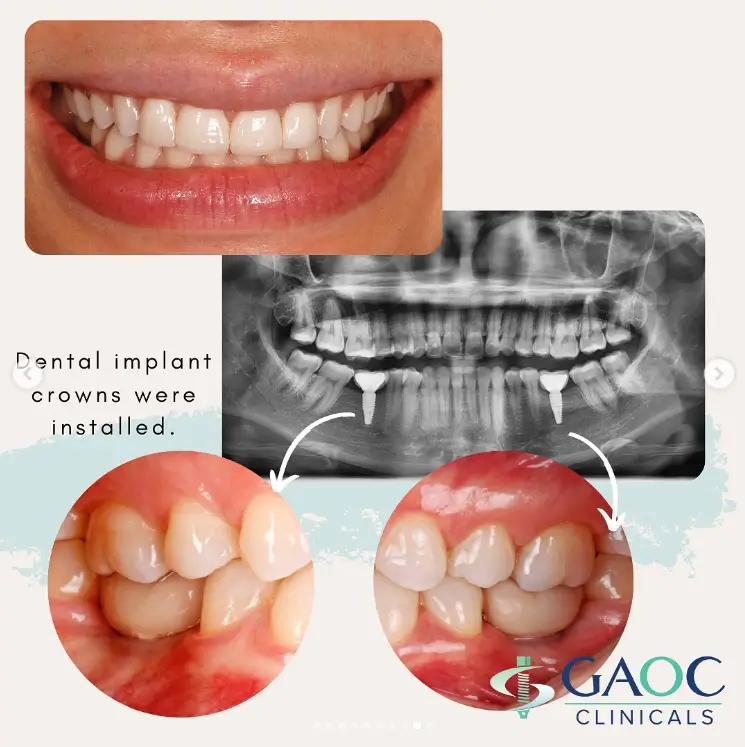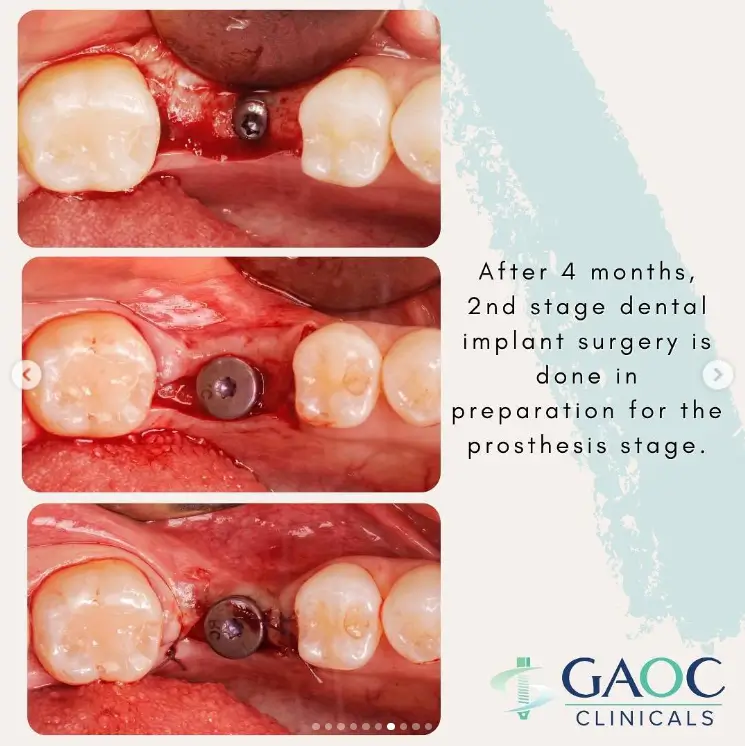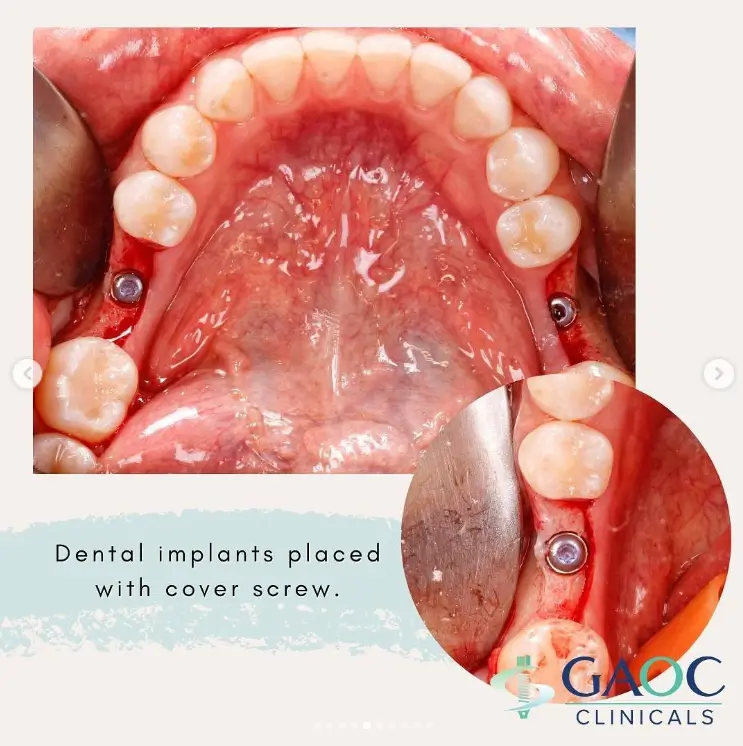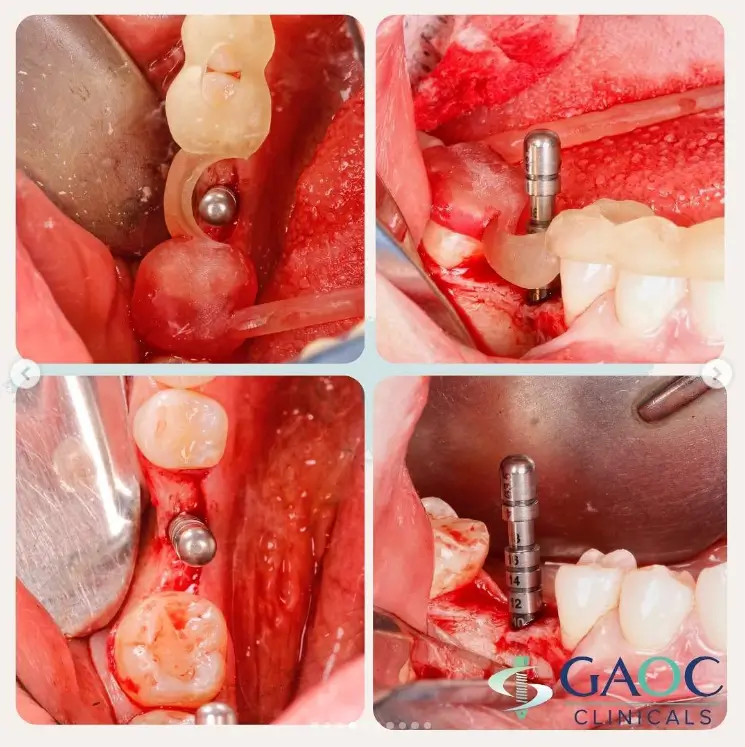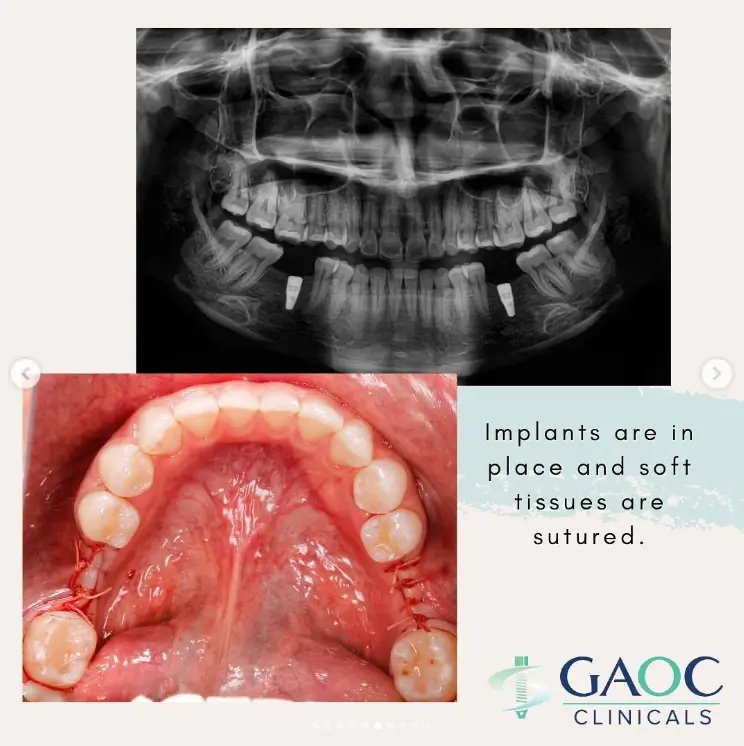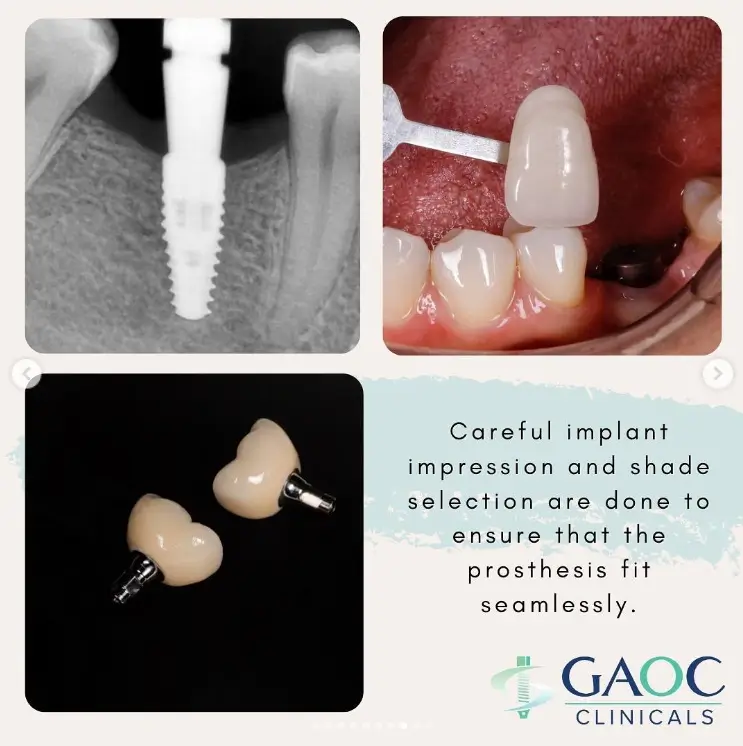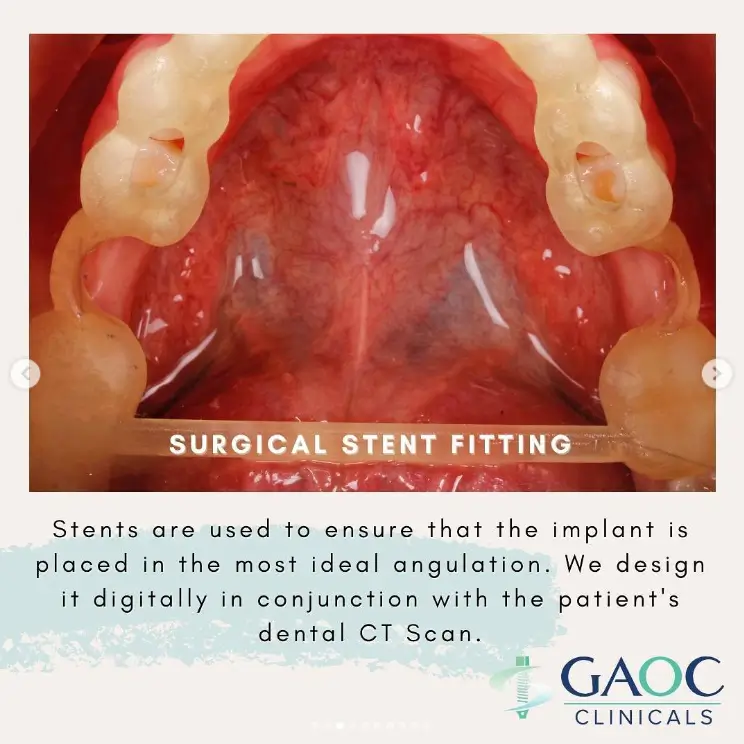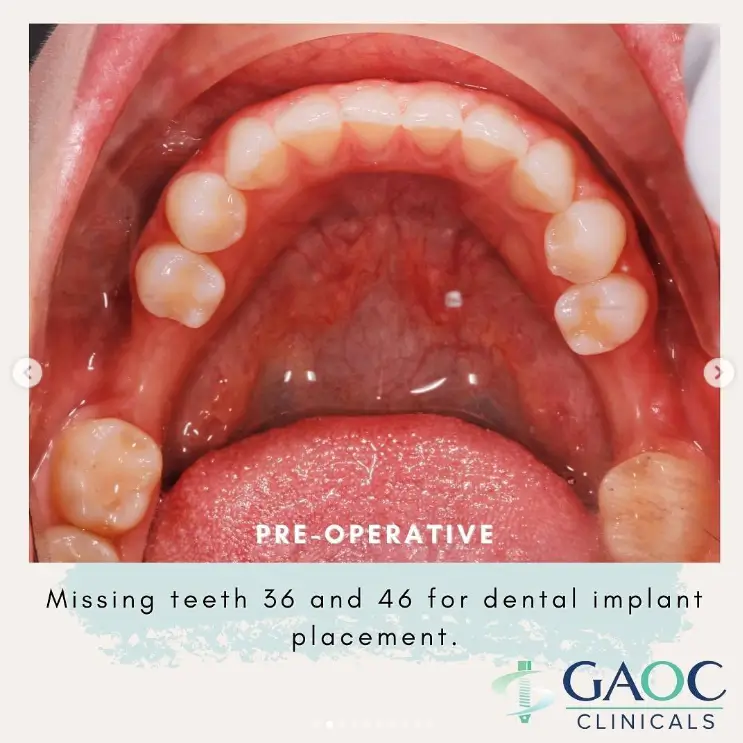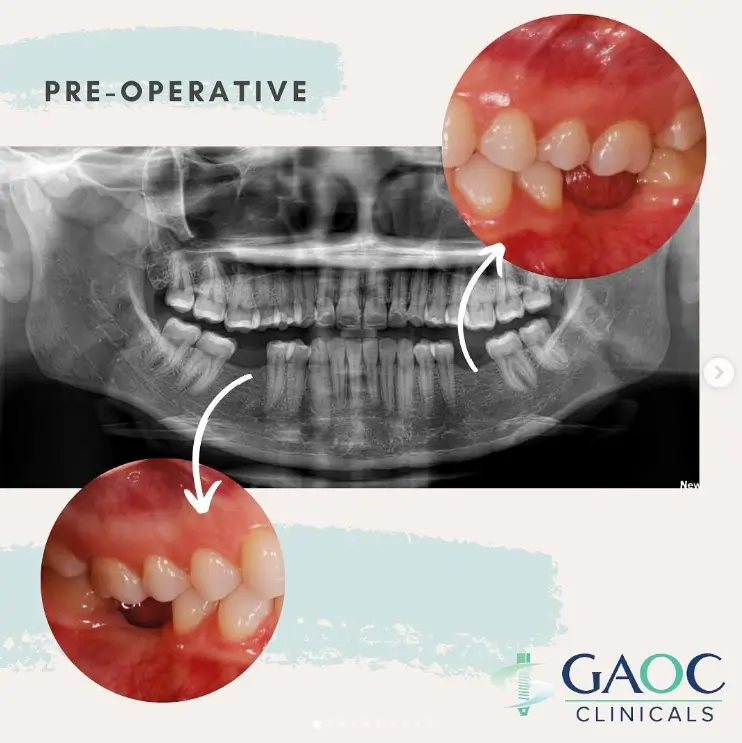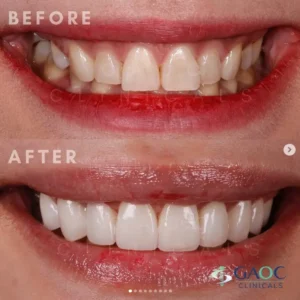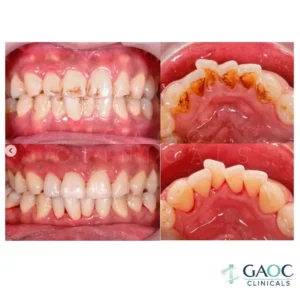When one loses teeth, factors such as occlusion, jaw function, and mastication are affected. Waiting too long to replace a missing tooth can cause adjacent teeth to move or drift, resulting to diastema (spaces in between teeth) or it can tilt sideways, eventually leading to mobility. The bone on the area with missing teeth can also recede overtime, making it challenging to place dental implants.
For this case, a patient came in with missing teeth 36 and 46. Prior to the appointment, the patient has only been wearing removable dentures for the edentulous areas. After years of denture wear, patient decided it was high time to move on to a longer lasting and more natural prosthesis.
Upon careful evaluation through various diagnostic aids such as model casts and dental CT Scan, it was concluded that the patient had enough bone to support dental implants. To ensure that the implant fixtures are placed at an optimum angulation and bone level (both for height and width), a surgical stent is used during placement. Surgical stents are planned with the prosthodontist to establish that the final restoration will be placed correctly in relation to the patient’s ridge as well as adjacent and opposing teeth. Planning the dental implant with the final prosthesis in mind increases the success rate of the treatment.
After implant placement, we wait for 4-6 months for osseointegration before moving on to 2nd stage dental implant surgery in preparation for the prosthesis stage. It is crucial to design dental implant crowns in a way that patients will have no difficulty with proper home care and hygiene. It is imperative that proper contour, texture, proximal and occlusal contacts be carefully evaluated to ensure that bacterial accumulation surrounding the prosthesis, which can lead to complications (such as peri-implantitis), is avoided.

